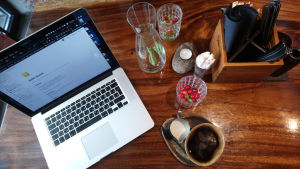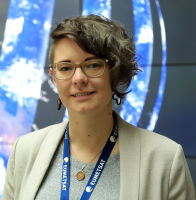5 main takeaways from my interviews with environmental journalists

Despite all of our efforts and the cutting-edge features that we kept adding to our products, the adoption of the web services was too low. I guess that's because we weren't listening enough to our customers, who were mostly students and researchers.
Hence, the failure opened new perspectives and lead to a new career path. I decided to leave the lab and take over the Product Manager's role in another country. Why not get some good stress to nurture personal development?
It was June of 2018 when my second child was born. I went on parental leave and realized that it was the perfect time to change my career again. And so I turned back to my first love—Earth Science.
Lessons were learned, and today I start a new venture to learn more about my customers' needs.
During the past month, I've conducted a dozen interviews with environmental journalists, folks from media agencies, and people who work with data.
New York, California, Rome, São Paulo, Coimbatore, Gothenburg, Saint Petersburg, Oslo, and Tallinn; an incredible experience for me, and a great pleasure to talk with all of you!
Now I would like to pay back and share my insights with you. Here are the 5 main takeaways I have gathered from the interviews:
1. Science must be translated into the human language. A bridge between researchers and the media is often missing.
"First is convincing the scientists to talk. But it's the journalist’s challenge to acquire the information from scientists because sometimes they can get very technical when talking about science, and then you need to stop somewhere and tell them to explain it at a much lower level; like explaining it to a child or something like that," – Sharada Balasubramanian.
2. Everyone needs a supporting hand, especially when it comes to manipulating the data or writing code.
"There's so much open-source data available and you can spend a lot of time sorting through it and figuring out how to manage the data, however, it's not the best use of my time because I'm trying to create a story," –Thomas Schueneman.
"Through (Climate4Media) we could kill two birds with one stone by not only offering people information but also educating them about it. In my experience, after attending many journalism conferences, people are interested but they don't know how to work with climate data themselves," – Markeya Thomas.
3. Environmental Journalism is never just about maps, charts, and numbers. It's always about people who are suffering.
"I wish I could tell the human side of the stories. The science is great and it's very important, but people in the communities impacted by this are suffering, and for them, it's more than just about science. And you have to tell the story through the eyes of the person experiencing it and going through it day by day and tie it in with the science because when you add a human element, the story becomes easier to tell and people can better relate to it," – Markeya Thomas.
"This is more of a social issue, not exactly an environmental issue, which is something that comes into our work. We don't do environmental journalism only, we usually do social environmental journalism," – Stefano Wrobleski.
4. Stories need a connection with a reader's reality.
"The strategy that we've been employing most recently when approaching climate-related issues is to give people something that they can connect to their day to day life now; to show them the impacts of climate-related issues now in addition to projections. We found that by solely relying on projections and something that people can neither see nor touch, as well as things that always seem just way too ahead in the future, we weren’t getting the same kind of traction.
<..>
Satellite data provides you with a real, tangible tool to tell a story. You can use words and talk about sea level rise, you can talk about beach erosion, coastal flooding, and all of that, but satellite data really gives you the ability to hit people over the head with the reality of it all," – Stephen Stirling.
5. Transparency of the information, the ability to combine different data sources and technical skills will play key roles in journalism.
"In data journalism, there is a sense that information should always be transparent and open. Combining two different data sets is not a huge problem—the work isn't that exclusive. It's more about, "Who can do this work?" Because not everyone can combine and interpret data," – Stefano Wrobleski.
"I'd certainly like to have proper access to big data that can illustrate data-driven stories. I think this is the future of journalism," – Alister Doyle.
"The role of satellite data in today's journalism could be really, really indispensable. Not only is satellite technology clearly getting better but what's publicly available is more and more extensive. And because there aren't many people that know how to do it in the world of journalism, I don't even think we've come close to unlocking all of the possibilities for it," – Stephen Stirling.
If you liked the article please do share the thread on Twitter.
💡This Summer I talked to many journalists who write the environment, to learn more about their job. Here are the 5 main takeaways from those interviews (THREAD) #journalism #journalists #environment
— Ilya Bolkhovsky (@bolkhovsky) August 20, 2019


